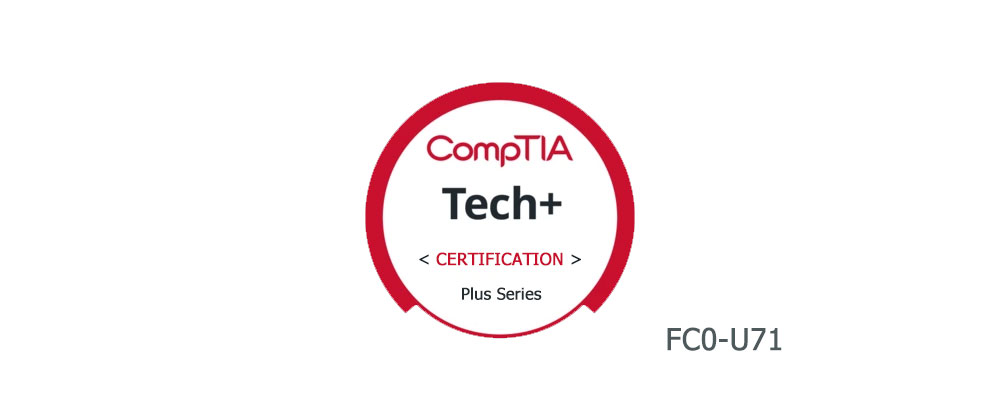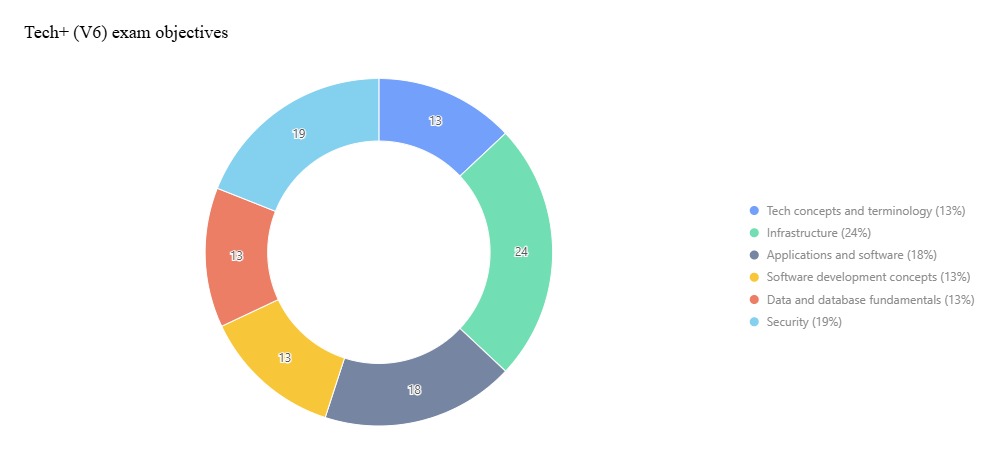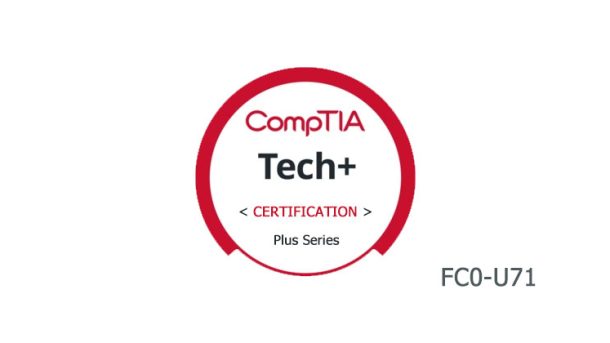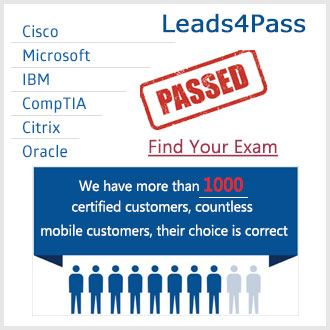CompTIA Tech+ (FC0-U71) is the new entry-level IT certification officially replacing ITF+ starting in 2025. It not only validates your core competencies for entering the tech field but also tests your understanding and application of multidimensional knowledge in computers, software, networking, security, and data.

This exam is particularly suitable for learners with no prior experience entering the IT field, professionals transitioning from non-technical roles, or even corporate employees seeking a comprehensive understanding of modern technical architectures.
According to official CompTIA data, over 78% of Tech+ FC0-U71 certification holders secure roles in IT support, systems assistance, or junior networking positions within six months of passing the exam, with an average salary increase of 15%–22%.
To successfully pass the FC0-U71 certification, it’s recommended to adopt a “blended learning approach” — combining official courses, hands-on, and high-quality exam practice resources.
Among the many supplementary learning platforms, many candidates choose Leads4Pass FC0-U71 exam materials for their final-stage review. The FC0-U71 practice test resources provided by Leads4Pass cover high-frequency real exam question types, helping you quickly align your study focus, understand the exam’s question logic, and reduce errors while boosting confidence in the actual test.
However, keep in mind: practice tests are only supplementary. The true key lies in mastering and understanding the knowledge structure. Next, we will break down the exam essentials, study strategies, and preparation sequence based on CompTIA’s official six exam domains, while sharing practical tips on how to use your time and resources more efficiently.

Domain 1: Tech concepts and terminology
This section accounts for approximately 13% of the exam’s total score and serves as the “knowledge foundation” for Tech+. You need to understand basic IT concepts, system components, and key terminology. According to official documentation, it primarily covers the following areas:
- Computing and Processing Principles
- Data Representation and Number System Conversion (Binary, Hexadecimal, Decimal)
- Storage Units and Bandwidth (Bit, Byte, GB, Mbps, etc.)
- Troubleshooting Methodology
- The Role of IT in Business Context
1.Understanding IT’s Core Language: Starting with “Bit”
In the actual exam, questions like “What is a bit?”, “How many MB are in 1 GB?”, or “How to convert between hexadecimal and binary?” are very common. Don’t underestimate these basic concepts—many questions use them to create confusion.
It’s recommended to first establish a clear unit hierarchy table:
| Unit | Meaning | Conversion Relationship |
|---|---|---|
| Bit (b) | Smallest unit of information | 8 bits = 1 Byte |
| Byte (B) | Byte | 1024 B = 1 KB |
| KB, MB, GB | Storage capacity units | Each level × 1024 |
| Mbps / Gbps | Transfer rate | 1 Mbps = 1,000,000 bits/s |
When practicing with Leads4Pass FC0-U71 Exam materials, many conversion questions include tricky options with different units. It’s advised to use flashcards for practice to build a “reflex” for unit conversions in your mind.
2.Troubleshooting Methodology: From Logical Thinking to Operational Steps
Approximately 30% of the exam questions involve problem-solving, such as: “What should be your first step when a computer cannot connect to the network?” According to CompTIA’s official documentation, the standard troubleshooting process includes six stages:
- Identify the problem
- Establish a theory of probable cause
- Test the theory
- Establish and implement a plan
- Verify full system functionality
- Document findings
For example:
When practicing with FC0-U71 exam questions, if you encounter a question like “A user reports that the computer cannot print,” don’t rush to choose “Replace the printer.” The correct first step is to determine the scope of the issue (e.g., is it only this user, is it a network-shared printer, etc.).
Many troubleshooting questions in Leads4Pass FC0-U71 exam materials follow this logic. Through repeated practice, you’ll quickly grasp the pattern of the “troubleshooting sequence.”
3.Using Real-World Scenarios to Memorize Concepts: Bringing Knowledge to Life
Memorizing number systems or input/output devices can feel tedious. An effective learning strategy is to connect these concepts to real-world scenarios:
- Imagine a computer as a factory, where the CPU is the worker, memory is the warehouse, the hard drive is the storage center, and the monitor is the delivery port.
- When a question asks, “Which component is most likely to cause data delays?” you can think of a bottleneck in the storage center—namely, the hard drive or network transfer rate.
This vivid thinking approach not only enhances understanding but also reduces the pressure of rote memorization. In the explanations provided by Leads4Pass FC0-U71 exam materials, analogy-based methods are often used to clarify question logic, making this approach highly worth adopting.
4.High-Frequency Trap Questions: Don’t Be Misled by Wording
Based on the latest 2025 exam feedback I’ve gathered, many candidates have been tripped up by the following two types of questions:
- Confusion between “computer system input devices” and “output devices”
- Input devices: Keyboard, mouse, scanner
- Output devices: Monitor, printer, speaker
- Distinguishing between “data” and “information”
- Data: Unprocessed raw facts
- Information: Processed and analyzed content used for decision-making
In the question types found in Leads4Pass FC0-U71 exam materials, you’ll notice many questions specifically target these details. The goal of practice isn’t rote memorization but developing an intuition for the exam’s “trap question” style.
5.My Study Experience: Building a “Practice-Review-Repeat” Cycle
A common mistake many beginners make is “completing practice questions once and moving on.” The most effective approach is to establish a three-step cycle:
- Initial Practice: Use Leads4Pass practice tests for a baseline self-assessment.
- Review: For every wrong answer, refer back to the official exam outline to pinpoint the knowledge gap.
- Repeat: Revisit the same questions after a 48-hour interval to strengthen long-term memory.
Through three rounds of this cycle, your accuracy can improve from 60% to over 90%. This is the most consistent method I’ve found after mentoring dozens of successful candidates.
Domain 2: Infrastructure
In the CompTIA Tech+ FC0-U71 official exam, the Infrastructure domain accounts for approximately 24% of the total weight, making it the section with the most questions and the greatest test of comprehension. It covers the fundamentals of computer hardware, networking devices, cloud computing, and internet connectivity.
1.Understanding the Relationship Between Hardware and Peripherals
This section features a wide variety of question types, which may require you to identify components or explain how to assemble a basic PC system. For example:
- Which device is used for long-term data storage? (Answer: HDD/SSD)
- What should you check first when a printer is unresponsive? (Connection cables, drivers, network sharing status)
It’s recommended to combine hardware learning with hands-on observation, such as opening an old computer to visually identify the motherboard, memory, CPU, network card, hard drive, and I/O interfaces. Many training programs offer such lab sessions, so when you encounter a question like “Which interface is used to connect a display device?” you can quickly distinguish between options like HDMI, DisplayPort, and DVI.
When using Leads4Pass FC0-U71 exam materials, you’ll come across many image-based device identification questions. Through these realistic simulations, you can quickly determine hardware categories and functions, thereby improving your answering speed.
2.Networking Basics: Understanding Connectivity Instead of Memorizing Definitions
This section often gives candidates a headache. The official requirements ask you to understand different network types (LAN, WAN, PAN, VPN) and common protocols (TCP/IP, HTTP, DNS, DHCP, etc.). The best learning approach is to “start with usage scenarios”—for example:
- When you open a webpage, DNS resolves the domain name to an IP address.
- When accessing cloud files, you’re connecting to a remote server via WAN.
When tutoring students, I often recommend they draw a “home network topology diagram”: modem → router → Wi-Fi devices → computer/phone. This simple diagram helps you understand the network hierarchy.
You can also use the “network configuration question set” in Leads4Pass FC0-U71 exam practice to train on these knowledge points. These exercises often present scenario-based questions, such as:
“If company employees can’t access a shared drive but can browse the internet, which configuration should you check?”
The correct answer to such questions often lies in logical reasoning—for example, it could be a disabled local sharing protocol or an internal DNS resolution error.
3.Cloud Computing and Virtualization: Emerging Trends in Exam Topics
With CompTIA’s 2025 update, cloud technology has become a key new focus in this domain. You need to understand:
- The three cloud service models: IaaS, PaaS, SaaS;
- The principles and use cases of virtual machines (VMs);
- The differences between public and private clouds.
For example: Dropbox and Google Workspace are SaaS; AWS EC2 is IaaS; and Microsoft Azure App Service is PaaS. The official documentation specifies that Tech+ does not require you to deeply deploy virtualization environments but expects you to understand their architectural logic and purpose.
In the Leads4Pass FC0-U71 exam practice module, there are cloud computing simulation questions with visual diagrams showing data flow between users and cloud servers, which are very intuitive. These are significantly helpful for understanding virtualization architectures.
Domain 3: Applications and Software
This domain accounts for approximately 18% of the total exam score, focusing on testing your understanding of operating systems, software installation and configuration, application management, and troubleshooting.
1.Operating Systems: Basic Comparison of Windows, macOS, and Linux
The exam often presents scenario-based questions, such as:
“Which technology should a user employ to run both Windows and Linux simultaneously?”
The correct answer is Virtualization, as it can be achieved through VM software like VirtualBox or Hyper-V.
It’s recommended that candidates have a basic understanding of the file systems, user permission management, and command-line basics for the three major systems.
For example:
- Windows uses NTFS;
- Linux commonly uses ext4;
- macOS uses APFS.
In Leads4Pass FC0-U71 exam materials, operating system-related questions have a significant presence, especially those involving commands and shortcuts.
It’s advised to first familiarize yourself with common commands:
| System | Basic Commands | Function Description |
|---|---|---|
| Windows | ipconfig / ping | View network configuration / Test connectivity |
| Linux | ls / pwd / cd / mkdir | Directory operations |
| macOS | top / kill / sudo | Process and permission management |
2.Software Installation and Security Configuration
CompTIA places special emphasis on candidates mastering the installation process and security considerations. For example:
- Verify software sources (official or authorized channels)
- Check digital signatures and versions
- Perform security updates after installation
These knowledge points frequently appear in Leads4Pass FC0-U71 exam practice materials, such as questions asking you to select the “best pre-installation check steps” or the “first measure to ensure system security.”
My suggestion is:
Set up a “sandbox” environment using a virtual machine to practice installing different types of software and document common errors. This method helps build muscle memory by connecting knowledge with practical operations.
Domain 4: Software Development Concepts
Don’t be intimidated by the title—Tech+ doesn’t require programming knowledge but expects you to understand the logic and lifecycle of software development. This domain accounts for approximately 13% of the total exam.
1.Software Development Life Cycle (SDLC)
The official SDLC is defined as five stages:
- Requirements
- Design
- Development
- Testing
- Deployment & Maintenance
For example, when a question asks: “What is the main goal of the testing phase?”
The correct answer is “Verify whether the program runs as per design requirements.”
When practicing with Leads4Pass FC0-U71 exam materials, you’ll notice that many SDLC questions don’t require memorizing definitions but instead focus on scenario-based questions like “Which phase is best for identifying errors?” or “When should user feedback be collected?”
2.Programming Logic and Algorithm Basics
The exam often covers fundamental concepts like pseudocode, logical decisions (if-else), and loops (for/while).
For example:
“Which of the following logic correctly determines if an input value is greater than 10?”
In the Leads4Pass FC0-U71 practice exams, there are multiple visualized logic diagram question types that help you form a mental concept of an “algorithm flowchart” instead of memorizing syntax.
3.Application Security and Error Handling
Software development isn’t just about writing code; it also involves considering security. Tech+ requires you to understand common vulnerabilities, such as SQL injection and buffer overflow.
These questions typically test whether you can identify “which code segment is most vulnerable to attacks” or “which security mechanism is most effective in preventing input errors.”
My suggestion is:
First, review the official documentation to understand the OWASP Top 10 vulnerabilities, then practice with the security-related questions in Leads4Pass FC0-U71 exam materials. This approach helps transform theoretical knowledge into exam-ready intuition.
Domain 5: Data and Database Fundamentals
This section accounts for approximately 13% of the total exam score, focusing on data organization, storage, retrieval, and management methods. Although it has a lower weight, the question types are flexible and highly conceptual, making it easy for candidates to lose points here.
1.Understanding the Value and Structure of Data
The exam requires you to identify different data types (text, numeric, Boolean), data structures (tables, rows, columns), and the purpose of databases. According to CompTIA’s official definition, a database is a “systematic collection used to organize, store, and manage data,” with the most common model being the Relational Database.
| Concept | Meaning | Example |
|---|---|---|
| Table | Data collection | Students table |
| Row / Record | Single data record | Information of one student |
| Column / Field | Data attribute | Name, age, grades |
| Primary Key | Unique identifier for each record | Student ID |
In Leads4Pass FC0-U71 exam materials, common question types include “identifying the primary key field” or “determining the SQL query result.”
For example:
Question: Which of the following SQL commands is used to retrieve data from a table?
Answer: SELECT.
Although these questions may seem simple, they often include confusing options (such as INSERT, UPDATE, DELETE), so understanding the semantics of each command is more important than rote memorization.
2.Data Management and Data Security
The exam also covers foundational data management knowledge, such as:
- Data Backup and Recovery
- Data Integrity
- Access Control
These topics are closely related to the “Security” domain in Domain 6.
In practical study, it’s recommended to use the “data protection scenario questions” in Leads4Pass FC0-U71 practice exams to train your judgment skills.
For example:
Question: “After a company’s database server fails, which backup type can restore data in the shortest time?”
Correct Answer: Incremental Backup combined with Full Backup.
3.Introduction to Data Visualization and Analysis
CompTIA’s 2025 update added exam topics on “data visualization.” Candidates need to understand how to transform data into information and present it through charts or dashboards.
These questions often require identifying which chart type is best suited for specific data:
- Line Chart: Showing trends
- Bar Chart: Comparing different categories
- Pie Chart: Displaying proportions
In Leads4Pass FC0-U71 exam materials, these visualization questions often include image descriptions, closely resembling the actual exam interface, helping candidates get familiar with the presentation of multimedia question types.
Domain 6: Security
Security is the most practical part of the Tech+ exam, accounting for 19% of the total score.
This domain tests not only foundational knowledge but also your security awareness and risk response capabilities.
1.Network and Device Security Basics
The exam content includes:
- Authentication and Authorization
- Encryption Technology
- Firewalls and Anti-Malware Tools
- Physical Security
For example:
Question: “Which technology is used to protect wireless network communication?”
Answer: WPA3 encryption protocol.
A common mistake candidates make is confusing encryption with authentication.
Simple mnemonic:
- Encryption is “locking data”;
- Authentication is “verifying who is accessing.”
It’s recommended to repeatedly practice with the “security configuration and protection strategy” question types in Leads4Pass FC0-U71 exam materials.
2.Social Engineering and User Security Awareness
In the real world, most security vulnerabilities stem from people, not technology.
Common exam questions include:
- Identifying phishing, spoofing, and tailgating behaviors;
- Determining which practice best enhances security awareness (e.g., two-factor authentication, password policies).
These questions often appear in narrative form, such as:
“An employee clicks a link in an email seemingly from a bank, enters company credentials, and the system is locked.”
Question: “What type of attack?” — Answer: “Phishing attack.”
By practicing with the behavior-based questions in Leads4Pass FC0-U71 exam materials, you can quickly become familiar with CompTIA’s question style regarding social engineering.
3.Data Privacy and Regulatory Compliance
In the 2025 update, CompTIA added a section on “Regulations and Privacy,” requiring knowledge of basic data protection laws, such as:
- GDPR (General Data Protection Regulation)
- CCPA (California Consumer Privacy Act)
Questions typically ask you to identify “which action violates data privacy regulations” or “which measure enhances data protection.”
hese topics are thoroughly explained in Leads4Pass FC0-U71 exam materials, helping candidates understand the connection between regulations and real-world scenarios.
Conclusion: Build Your Strategy to Pass the Tech+ FC0-U71 Exam
To easily and efficiently pass the CompTIA Tech+ (FC0-U71) exam, the key is not memorization but building a systematic knowledge network.
The optimal preparation path is:
- Study the official exam outline and courses
→ Understand the structure and weighting of the six domains. - Engage in hands-on practice and lab operations
→ Transform theory into practical experience. - Use high-quality practice resources
→ Strengthen exam response and knowledge integration with Leads4Pass FC0-U71 exam materials (https://www.leads4pass.com/fc0-u71.html). - Conduct multiple rounds of review and error tracking
→ Build a long-term memory curve and reinforce weak areas.
According to feedback from learners, candidates using Leads4Pass exam materials improved their pass rate by approximately 29%. This shows that the right study approach is both easier and more effective.
FAQs
Q1: What is the difference between CompTIA Tech+ (FC0-U71) and ITF+ (FC0-U61)?
A:Tech+ is the updated certification, with revised exam domains, added content on cloud computing and data security, and better alignment with modern enterprise technology needs.
Q2: Does the exam require programming knowledge?
A: No. You only need to understand the software development lifecycle and logical thinking; coding is not required.
Q3: Are Leads4Pass FC0-U71 exam practice materials and dumps reliable?
A: Leads4Pass provides content based on real question types, with clear explanations and broad coverage, making it an excellent tool for exam preparation and review.
Q4: How long is the Tech+ certification valid?
A: The certification is valid for three years and can be renewed through Continuing Education (CE) or by obtaining a higher-level certification.
Q5: How long is the recommended study period?
A: A 4–6 week systematic study plan is generally recommended:
- First 2 weeks: Master the theory of the six domains.
- Weeks 3–4: Engage in hands-on practice.
- Final 2 weeks: Focus on practicing with Leads4Pass FC0-U71 exam materials and reviewing incorrect answers.


